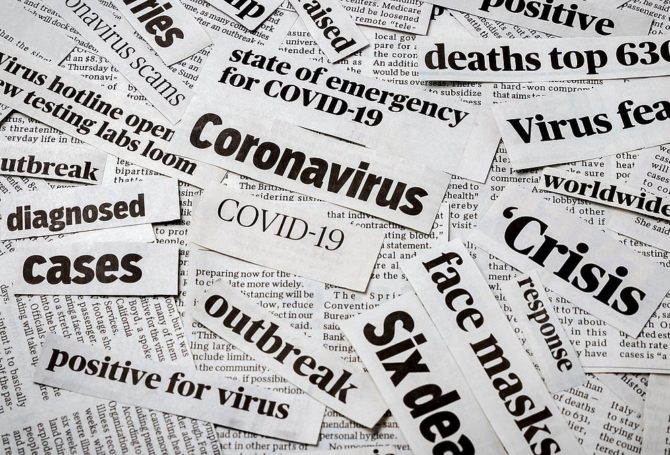
A recent study suggests US news coverage of COVID-19 is unrelentingly negative. Whether true or not, the finding is a good reminder to prepare for media interviews by expecting skeptical questioning.
The study overseen by Dartmouth economics professor Bruce Sacerdote analyzed thousands of articles in US news outlets about the coronavirus pandemic. Judging stories as negative, positive or neutral, Sacerdote said researchers found US pandemic coverage was “shockingly negative” compared with international media coverage and articles in scientific journals.
The study revealed nearly 90 percent of articles from major US news organizations were scored as negative compared to just 50-60 percent from major international media sources, he says. “There were times when the media could have focused on the good instead of the bad, but chose to amplify the latter.”
Sacerdote said negativism permeated both liberal and conservative news outlets. He suggested that reflects a general audience preference for negative news over good news. “The most popular articles, whether that’s quantified by the most viewed or most shared, overwhelmingly center on gloom and doom,” he says.
If the news media inclines toward negative story angles, following the cues of its audience, then news sources and organizational spokespeople should buckle up for a potentially rough ride, even when pitching “positive” stories. That should put a premium on media training and media training refreshers.

Strolling naively unprepared into a media interview ranks somewhere between unwise and stupid. Expect the worst, imagine the unimaginable and prepare as best you can is a much sounder and more professional approach. It is better to be safe than skewered.
Media training isn’t a commodity. It can take many forms and assume varying intensities. Not every media encounter requires a full-bore stress test. But any media encounter of note should be preceded by at least a tabletop media training refresher, group brainstorming to anticipate tough questions and diligent practice in delivering your key message amid antagonistic questions.
The days are gone when media relations involved establishing rapport with a handful of local reporters and perhaps one or two reporters for trade journals. The news business has at once imploded and exploded. Many local publications have gone under, while there are now national publications on the prowl for juicy local angles to larger stories, many of which have agendas or a very specific audience to satisfy.
Interviews in the current media marketplace can be in-person, by phone, on Zoom or live on-air. In some cases, you may deal with a producer, not the person who writes or reads the story. The story can show up on websites, Twitter, YouTube and other outlets, occasionally including print media.
Many publications, especially digital ones, don’t subscribe to journalistic ethics of fairness, accuracy and balance. Cable “news” shows are often just megaphones for a political point of view, which can involve contorting events, comments and questions to please their polarized viewers.
Media training stress tests are useful for spokespeople to identify distracting hand motions, poor eye contact and excessive “ums”. The greater value of stress test interviews, however, is to experience the pressure of aggressive questioning and watch yourself perform on video. Performing in stressful situations doesn’t come naturally for most people. Awareness, practice and building self-confidence can make a huge difference.
While stress test media training interviews were invented to prepare spokespeople dealing with crises, the exercise has taken on wider application for anyone who is in the media relations business. It is recognition that even vanilla topics can turn into flambé pudding through bait-and-switch interviews, ambush questions and questioning that borders on belligerence.
Treating reporters like bad guys is wrongheaded. Most are just doing their job. What has changed is their job description. If audiences want negative news and it’s the job of reporters and their editors to dish up regular servings. It is the job of media relations professionals to prepare for negative questioning with context and the brighter side of the story.
Treating reporters like bad guys is wrongheaded. Most are just doing their job. What has changed is their job description. If Sacerdote’s research findings are anywhere near correct, audiences pay attention to negative news and it’s the job of reporters and their editors to dish up regular servings of negativity. It is the job of media relations professionals to prepare to respond to negative questioning with context and the brighter side of the story.
News reporters, editors and producers recognize the trend toward negative news and many have made an effort to include good news stories in their editorial mix. That represents an appealing opportunity to generate positive news, but even those efforts have the potential to backfire if no one bothers to consider the downside risk of “good news” and prepare for it.
If this all seems perplexing, think of negativity as an opportunity in media relations. Embrace the negative and confront it head on, even if it requires an apology or admission. As we’ve noted before, it is paradoxical that most people trust newsmakers who don’t act like they know it all or shy away from accepting blame. They may seem like a convoluted route to positivity, but any route is better than a derailment into negativity.




